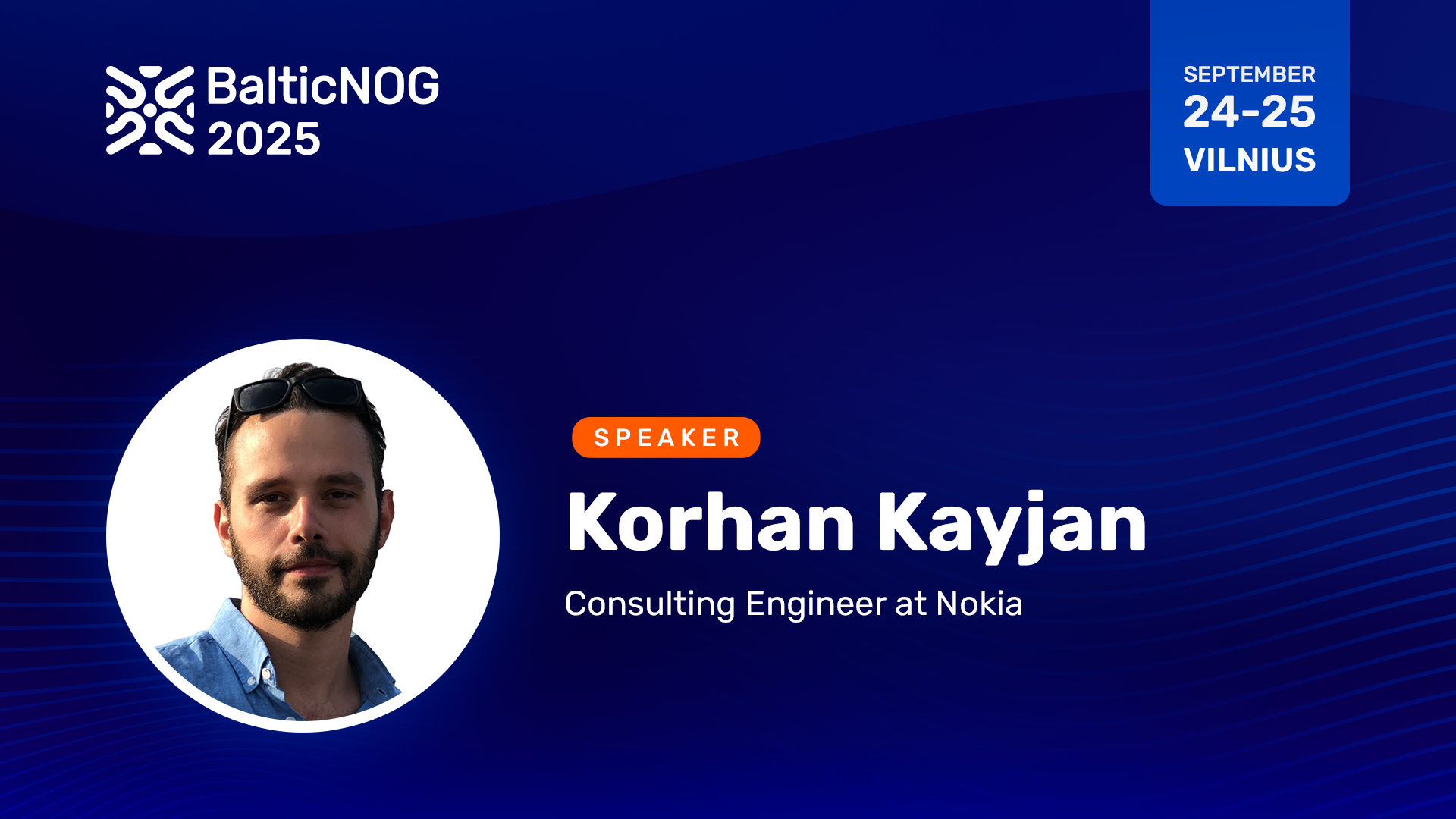Datacenter Networking Best Practices: A High-Level Overview of Modern DC Network Architecture
Datacenters are the backbone of today’s digital economy, powering everything from cloud services to critical enterprise applications. At BalticNOG 2025, Korhan Kayhan, Consulting Engineer at Nokia, provided a high-level look at how modern datacenter networks are designed, operated, and optimized for resilience and scale.
From Outages to Expertise
Korhan’s journey at Nokia began with troubleshooting ISP internet outages, evolved into subject-matter expertise in datacenter networking, and today places him at the crossroads of sales engineering and product line management. This blend of technical and business experience allows him to approach datacenter design not only from an engineering perspective but also through the lens of operational efficiency and customer needs.
Principles of Modern DC Network Design
Modern datacenter networks face the dual challenge of handling exponential traffic growth and maintaining ultra-low latency. Korhan outlined best practices that define successful architectures today:
- Scalability first — fabrics designed to grow horizontally with predictable performance.
- Redundancy and resiliency — no single points of failure, with automation handling failover scenarios.
- Network segmentation and security — microsegmentation, strict ACLs, and advanced monitoring to contain threats.
- Automation everywhere — intent-based configuration, zero-touch provisioning, and continuous compliance.
These practices ensure datacenter fabrics can serve cloud-native applications and traditional enterprise workloads without compromise.
From Infrastructure to Strategic Asset
Korhan emphasized that modern datacenter networking is no longer about hardware alone but strategic integration. Networking, compute, and storage must work as one system, with automation linking monitoring and security into a proactive ecosystem. This approach boosts performance and resilience, reduces operational costs, and accelerates service delivery.
By following these best practices, operators can transform their datacenters from static infrastructure into agile, strategic assets capable of adapting to the future’s unpredictable demands.
🚀 Join Us at BalticNOG 2025
Don’t just read about it — experience it live! BalticNOG brings together 40+ speakers, 400+ participants, and attendees from nearly 30 countries for two days of networking, knowledge-sharing, and hands-on learning.
👉 [Get your ticket now] – secure your place before seats run out.
👉 [Check the agenda] – explore the sessions, panels, and workshops that matter most to you.
👉 [Plan your trip] – find travel details, accommodation tips, and everything you need to maximize your time in Vilnius.
Be part of the community shaping the future of the internet. See you at BalticNOG 2025!

